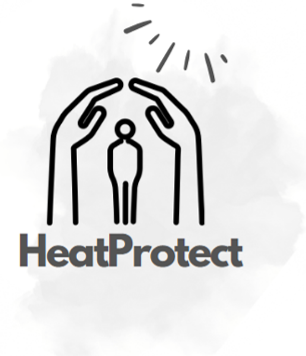Heatwaves and high temperatures place a significant burden on the population, particularly on vulnerable groups such as the elderly, children, and individuals with chronic illnesses. Studies demonstrate that high temperatures (›30°C) during the day and night (›20°C) have significant health impacts. Effects on women show a stronger correlation than on men. As climate change progresses, there will be an increase in hot days, leading to greater strain, bottlenecks, and even overloads on the healthcare and social care systems due to rising hospital admissions, care services, and emergency responses.
It is therefore crucial to raise awareness of the health risks posed by heat at political, institutional, and individual levels and to proactively implement measures to reduce thermal stress. To this end, national and regional heat protection plans, including a catalog of short- and medium-term measures, have already been developed. However, an evidence-based evaluation, prioritization framework, and implementation tools are still lacking.
Foundations and Objectives
The HeatProtect project establishes a sound data foundation for decision-making and digital solutions to manage heat periods. For the first time, we analyze and quantify the connections between heatwaves and the impacts on Austria's healthcare system. We define meteorological thresholds for the significantly increased occurrence of various diseases, taking into account existing multimorbidities and external factors such as exposure and vulnerability. By combining these data, particularly affected areas can be identified and classified using Key Performance Indicators (KPIs). This approach allows for a better determination of both individual and structural heat risks, as well as the development of immediate acute measures and medium- to long-term strategies.
Developing an Early Warning System
In collaboration with project partners and stakeholders from the health and care sectors, we are developing solutions in a co-creation process for effectively managing acute heatwaves for clients and staff. The goal is to design an efficient early warning system based on weather forecasts combined with defined KPIs to provide timely warnings and information to individuals and institutions.
Long-term Strategies for Managing Heatwaves
On a medium- to long-term scale, climate risks, the local effects of adaptation measures, and the impacts on the healthcare sector are examined. Through scenario-based simulations, changes in heat stress, altered exposure, and consequently modified climate risks are modeled. Using agent-based models, we then predict the impact on the number of heat-related hospitalizations and ambulance dispatches.
Application of Results
The results of HeatProtect are relevant on individual, institutional, and structural (policy) levels. The findings are presented in workshops at the AIT's City Intelligence Lab, where existing heat protection measures are evaluated and prioritized collaboratively. The different scenarios are also assessed for their economic and ecological impacts. Both the total costs of heat-related health issues and the resulting greenhouse gas emissions are quantified. This enables HeatProtect to compare the impacts of climate protection and adaptation measures on costs and environmental burden, assess their effectiveness, and derive co-benefits between health aspects and climate protection.
Funding
HeatProtect is funded by the Austrian Research Promotion Agency (FFG).
![[Translate to English:] Climate-Resilient Urban Pathways Symbolfoto: Das AIT ist Österreichs größte außeruniversitäre Forschungseinrichtung](/fileadmin/_processed_/f/8/csm_2013-10-01_vogelperspektive2013__c__schreinerkastler_querformatig__climate_sensitive_urban_planning_ceb9915bba.jpg)



